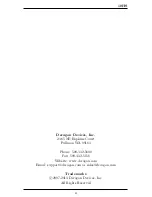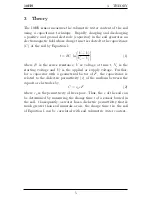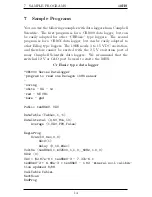
4
INSTALLING THE SENSOR
10HS
4
Installing the Sensor
When selecting a site for installation, it is important to remember
that the soil adjacent to the sensor surface has the strongest influence
on the sensor reading and that the sensor measures the volumetric
water content of the soil. Therefore any air gaps or excessive soil
compaction around the sensor and in between the sensor prongs can
profoundly influence the readings.
•
If you are installing sensors in a lightning prone area with
a grounded data logger, please see our Application Note at
www.decagon.com/lightning
.
•
Decagon advises that you test the sensors with your data log-
ging device and software before going to the field.
Also, do not install the sensor adjacent to large metal objects such
as metal poles or stakes. This can attenuate the senors electromag-
netic field and adversely affect readings. In addition, the 10HS sensor
should not be installed within 5 cm of the soil surface, or the sensing
volume of the electromagnetic field can extend out of the soil and
reduce accuracy.
Because the 10HS has gaps between its prongs, it is also impor-
tant to consider the particle size of the medium you are inserting the
sensor into. It is possible to get sticks, bark, roots or other material
stuck between the sensor prongs, which will adversely affect readings,
Finally, be careful when inserting the sensors into dense soil, as the
prongs can break if excessive sideways force is used when pushing
them in.
4.1
Procedure
When installing the 10HS it is imperative to maximize contact be-
tween the sensor and soil.
For most accurate results, the sensor
should be inserted into undisturbed soil. There are two basic meth-
ods to accomplish a high quality installation.
Method 1. Horizontal Installation
6







































